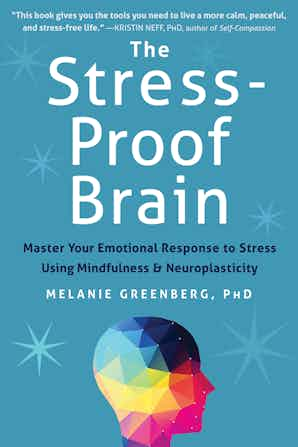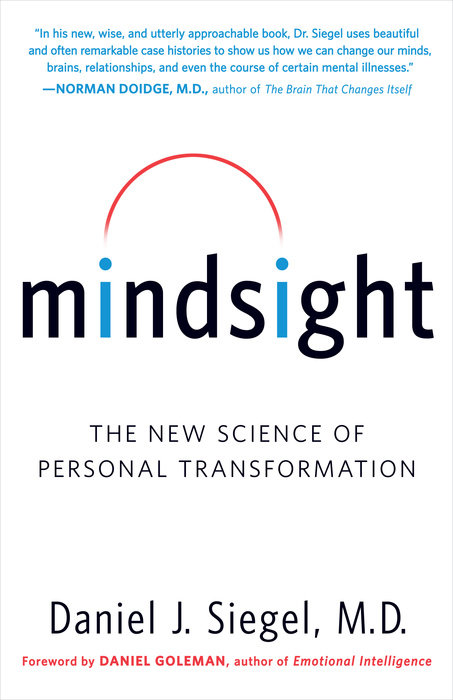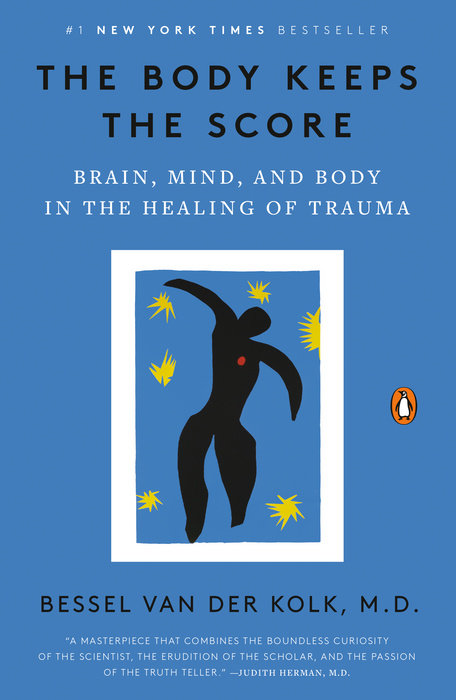Recognize the signs and get the help you need to reduce the toll on your body and mind
YOU MIGHT ALSO LIKE
CLEAR ALL
BY TOPIC
BY TEACHER
BY TYPE
FILTER

TOPIC
- Well-Being (52)
- Work Challenges (50)
- Self-Care (44)
- Stress (33)
- Compassion Fatigue (32)
- Work-Life Balance (31)
- Mind-Body Connection (29)
- Emotional and Mental Health (27)
- Dementia (26)
- Illness and Injury (26)
- Cancer (25)
- Resilience (24)
- Meditation (21)
- Neuroscience (21)
- Anxiety (19)
- Self-Development (19)
- Athlete Well-Being (17)
- Happiness (16)
- Self-Reflection Practices (16)
- Self-Healing (15)
- Awareness (14)
- Mindfulness (14)
- Offering Support to Others (14)
- Creative Well-Being (13)
- Inner Peace (13)
- Self-Discovery (13)
- Trauma Healing (13)
- Asking for Help (12)
- Communication Skills (12)
- Living with Illness (12)
- Work Relationships (11)
- Chronic Health Conditions (10)
- Depression (10)
- Neuroplasticity (10)
- Rest (10)
- Self-Control (10)
- Focus (9)
- Grief (9)
- Habits of Mind (9)
- Physical Health (9)
- Productivity (9)
- Self-Actualization (9)
- Young Adult Well-Being (9)
- Authenticity (8)
- Breathwork (8)
- Child’s Emotional Growth (8)
- Emotional Intelligence (EQ) (8)
- Exercise (8)
- Goal Setting (8)
- Identity (8)
- Parenting (8)
- Positive Psychology (8)
- Sleep (8)
- Buddhism (7)
- Empathy (7)
- Empowerment (7)
- Family Dynamics (7)
- Fear (7)
- Finding Meaning (7)
- Grit (7)
- Human Potential (7)
- Leadership (7)
- Letting Go (7)
- Memoir (7)
- Mindfulness Practices (7)
- Motivation (7)
- Negative Self-Talk (7)
- Relationship Challenges (7)
- Search for Purpose (7)
- Self-Limiting Beliefs (7)
- Self-Reckoning (7)
- Setting Limits and Boundaries (7)
- Transformation (7)
- Women’s Well-Being (7)
- Activism/Service (6)
- Anger (6)
- Belonging (6)
- BIPOC Well-Being (6)
- Brain Health (6)
- Courage (6)
- Endurance (6)
- Entrepreneurship (6)
- Growth Mindset (6)
- Habit Formation (6)
- Honoring Emotion (6)
- Inner Strengths (6)
- Joy (6)
- Self-Acceptance (6)
- Spiritual Healing (6)
- Addiction (5)
- Black Well-Being (5)
- Chronic Pain (5)
- Compassion (5)
- Conflict Resolution (5)
- Diet and Nutrition (5)
- Fellowship and Community (5)
- Integrative Medicine (5)
- Intention (5)
- Kids and Sports (5)
- Managing Energy (5)
- Peak Performance (5)
- Self-Compassion (5)
- Spiritual Life (5)
- The Feldenkrais Method (5)
- Time Management (5)
- Work Ethic (5)
- Autoimmune Disease (4)
- Child’s Trauma (4)
- Community Healing (4)
- Death or Loss of a Loved One (4)
- Female Empowerment (4)
- Gratitude (4)
- Healthy Eating (4)
- Imagination and Creativity (4)
- Life Challenges (4)
- Love (4)
- Mental Health Challenges (4)
- Passion (4)
- Personal Development (4)
- Presence (4)
- Relationship with Time (4)
- Self-Love (4)
- Self-Pressure (4)
- Self-Reliance (4)
- Self-Worth (4)
- Soul Mission (4)
- Stoicism (4)
- Trauma (4)
- Veteran Well-Being (4)
- Yoga (4)
- Child’s Challenging Behavior (3)
- Chronic Anxiety (3)
- Climate Change (3)
- Collaboration (3)
- Competition (3)
- Connection with Nature (3)
- Death and Dying (3)
- Death or Loss of a Parent (3)
- Decision Making (3)
- Digital Life (3)
- Disabled Well-Being (3)
- Disconnection (3)
- Drug Addiction (3)
- Dysfunctional Childhood (3)
- Embodiment (3)
- Emotional Labor (3)
- Guided Meditation (3)
- Guilt (3)
- Hope (3)
- Integrity (3)
- Interdependence (3)
- Motherhood (3)
- Neuropsychology (3)
- Positive Self-Talk (3)
- Quitting Your Job (3)
- Relationship with Money (3)
- Self-Realization (3)
- Shame (3)
- Social Justice (3)
- Spiritual Development (3)
- Tibetan Buddhism (3)
- Values (3)
- Academic Struggles (2)
- Addiction Recovery (2)
- Aging (2)
- Autism (2)
- Awe (2)
- Building Culture (2)
- Challenges with Teens (2)
- Child’s Anxiety (2)
- Children’s Well-Being (2)
- Chronic Fatigue (2)
- Collective Trauma (2)
- Confidence (2)
- Criticism and Rejection (2)
- Death-Positive Movement (2)
- Eating Disorders (2)
- Energy Balancing (2)
- Energy Healing (2)
- Failure (2)
- Fatherhood (2)
- Fatigue (2)
- Foster Parenting (2)
- Freedom (2)
- Gender Challenges (2)
- Generosity (2)
- Global Challenges (2)
- Healing Approaches (2)
- Heartmath (2)
- Holism (2)
- Hospice (2)
- Indigenous Well-Being (2)
- Inner Life (2)
- Intimacy (2)
- Jealousy/Envy (2)
- Laughter Therapy (2)
- Learning Styles (2)
- Loss of Partner/Spouse (2)
- Manifestation (2)
- Mantra Meditation (2)
- Marriage (2)
- Memory (2)
- Neurodiversity (2)
- Optimism (2)
- Perception (2)
- Performance Pressure (2)
- Play (2)
- Positive Thinking (2)
- Problem Solving (2)
- Psychology (2)
- PTSD (2)
- Racism (2)
- Romantic Relationships (2)
- Self-Discipline (2)
- Situational Depression (2)
- Social Media Addiction (2)
- Social Responsibility (2)
- Somatic Practices (2)
- Spiritual Awakening (2)
- Spiritual Growth (2)
- Suffering (2)
- Sutras (2)
- Tapping/EFT (2)
- Trust (2)
- Vedic Meditation (2)
- Vulnerability (2)
- Weight Concerns (2)
- Wholeness (2)
- Willpower (2)
- Youth Activism (2)
- Zen Buddhism (2)
- A Course in Miracles (1)
- Abandonment (1)
- Acceptance (1)
- Access to Education (1)
- Acupressure (1)
- ADD/ADHD (1)
- AIDS (1)
- Anger Management (1)
- Anorexia (1)
- Art Therapy (1)
- Binge Eating (1)
- Biofeedback (1)
- Body Image (1)
- Building Character (1)
- Bulimia (1)
- Bullying (1)
- Calming Meditation (1)
- Chakras (1)
- Cognition (1)
- Cognitive Behavioral Therapy (1)
- Compassion Meditation (1)
- Connection (1)
- Conscience (1)
- Conscious Evolution (1)
- Curiosity (1)
- Dark Night of the Soul (1)
- Death or Loss of a Sibling (1)
- Despair (1)
- Discrimination (1)
- Environmental Justice (1)
- Epigenetics (1)
- Facing Own Death (1)
- Fate (1)
- Female Friendship (1)
- Financial Instability (1)
- Forest Bathing (1)
- Forgiveness (1)
- Friendship (1)
- Gender Discrimination (1)
- Grace (1)
- Herbal Supplementation (1)
- Higher Calling (1)
- Highly Sensitive People (1)
- Humility (1)
- Imposter Syndrome (1)
- Inflammation (1)
- Inner Child (1)
- Insight (Vipassana) Meditation (1)
- Inspiration (1)
- Intuition (1)
- Journaling (1)
- Jungian Analysis (1)
- Kindness (1)
- Latinx Well-Being (1)
- Lovingkindness (1)
- Lovingkindness Meditation (1)
- Masculine/Feminine Dynamics (1)
- Men’s Well-Being (1)
- Mentoring (1)
- Midlife Crisis (1)
- Mindfulness Meditation (1)
- OCD (1)
- Personality Disorders (1)
- Personality Typing (1)
- Philosophical Approaches (1)
- Post-Traumatic Growth (1)
- Psychedelic Journey (1)
- Quantum Physics (1)
- Race and Gender (1)
- Racial Discrimination (1)
- Racial Healing (1)
- Racial Identity (1)
- Racial Justice (1)
- Self-Employment (1)
- Self-Esteem (1)
- Sex (1)
- Sexuality (1)
- Social Psychology (1)
- Somatic Experiencing (1)
- Speaking Your Truth (1)
- Spiritual Crisis (1)
- Spiritual Fasting (1)
- Suicide (1)
- Sustainability (1)
- Taoism (1)
- Toxic Relationships (1)
- Trauma-Informed Therapy (1)
- Unfulfilled Career (1)
- Visualization (1)
- Women’s Rights (1)
- Zen Meditation (1)
FILTER

TEACHER
- don Miguel Ruiz (3)
- Eckhart Tolle (3)
- Edward Hallowell (3)
- Elizabeth Lesser (3)
- Joan Borysenko (3)
- Kenneth Pelletier (3)
- Lisa Wimberger (3)
- Marcus Aurelius (3)
- Noah Elkrief (3)
- Stephanie Y. Evans (3)
- Amishi Jha (2)
- Brené Brown (2)
- Brian Tracy (2)
- Daniel Amen (2)
- Daniel J. Siegel (2)
- Debbie Ford (2)
- Diane Ackerman (2)
- Elizabeth Stanley (2)
- Gabor Maté (2)
- Gary Zukav (2)
- Jonni Pollard (2)
- Judson Brewer (2)
- Kelly McGonigal (2)
- Lorin Roche (2)
- Martha Beck (2)
- Mel Robbins (2)
- Rick Hanson (2)
- Sadhguru (2)
- Alexandra Fine (1)
- Alison Green (1)
- Amy Morin (1)
- Andrew Solomon (1)
- Anne Lamott (1)
- Aviva Romm (1)
- Bessel van der Kolk (1)
- Blaise Aguirre (1)
- Brendon Burchard (1)
- Brian Weiss (1)
- Bruce Lipton (1)
- Cal Newport (1)
- Chalene Johnson (1)
- Chip Conley (1)
- Dan Millman (1)
- David Perlmutter (1)
- David Spiegel (1)
- David Whyte (1)
- Deb Dana (1)
- Dilip Jeste (1)
- don Jose Ruiz (1)
- Donna Eden (1)
- Donna Jackson Nakazawa (1)
- Elaine Aron (1)
- Ericka Sóuter (1)
- Frederic Luskin (1)
- Gary Craig (1)
- Geneen Roth (1)
- Guru Jagat (1)
- Jack Canfield (1)
- Jack Kornfield (1)
- Jacqueline Carter (1)
- James Baraz (1)
- James Hollis (1)
- Jan Willis (1)
- Jana Long (1)
- Jane Roberts (1)
- Jean Shinoda Bolen (1)
- Jeffrey Mishlove (1)
- Jerry M. Ruhl (1)
- Joan Halifax (1)
- Jon Kabat-Zinn (1)
- Judith Orloff (1)
- Karen May (1)
- Kate Johnson (1)
- Kathy Freston (1)
- Ken Wilber (1)
- Kim Eng (1)
- Linda Graham (1)
- Lissa Rankin (1)
- Louise Hay (1)
- Maharishi Mahesh Yogi (1)
- Maria Sirois (1)
- Marianne Williamson (1)
- Marie Forleo (1)
- Mark Victor Hansen (1)
- Martin Seligman (1)
- Matt Kahn (1)
- Michael Bernard Beckwith (1)
- Moshé Feldenkrais (1)
- Nicolai Bachman (1)
- Nikki Mirghafori (1)
- Oliver Sacks (1)
- Ondrea Levine (1)
- Ram Dass (1)
- Rebecca Solnit (1)
- Rich Fernandez (1)
- Rich Roll (1)
- Robert Augustus Masters (1)
- Ruby Wax (1)
- Russell Brand (1)
- Sam Harris (1)
- Sanjay Gupta (1)
- Sharon Salzberg (1)
- Simon Sinek (1)
- Stephen Levine (1)
- Susan Piver (1)
- Swami Mukundananda (1)
- Sylvia Boorstein (1)
- The Dalai Lama (1)
- Thich Nhat Hanh (1)
- Thomas Moore (1)
- Toni Bernhard (1)
- Tony Robbins (1)
- Wim Hof (1)
- Yongey Mingyur Rinpoche (1)
- Yung Pueblo (1)










